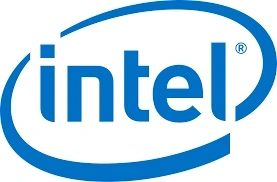Didn't find what you're looking for?
Automobile and Transportation
Global Electric Vehicles (EVs) Market Research Report 2022(Status and Outlook)
By Type : Market Segmentation (by Type), BEV, PHEV
By Application : Market Segmentation (by Application), Home Use, Commercial Use
Description
ToC
Tables & Figures
Companies
Speak with Analyst
Report Overview:
Electric Vehicles are vehicles that are either partially or fully powered on electric power.
The Global Electric Vehicles (EVs) Market Size was estimated at USD 188150.00 million in 2021 and is projected to reach USD 497460.00 million by 2028, exhibiting a CAGR of 14.90% during the forecast period.
The latest report provides a deep insight into the global Electric Vehicles (EVs) market covering all its essential aspects. This ranges from a macro overview of the market to micro details of the market size, competitive landscape, development trend, niche market, key market drivers and challenges, SWOT analysis, Porter’s five forces analysis, value chain analysis, etc.
The analysis helps reader to shape the competition within the industries and strategies for the competitive environment in order to enhance the potential profit. Furthermore, it provides a simple framework for evaluating and accessing the position of the business organization. The report structure also focuses on the competitive landscape of the Global Electric Vehicles (EVs) Market, this report introduces in detail the market share, market performance, product situation, operation situation, etc. of the main players, which helps the readers in the industry to identify the main competitors and deeply understand the competition pattern of the market.
In a word, this report is a must-read for industry players, investors, researchers, consultants, business strategists, and all those who have any kind of stake or are planning to foray into the Electric Vehicles (EVs) market in any manner.
Global Electric Vehicles (EVs) Market: Market Segmentation Analysis
The research report includes specific segments by region (country), manufacturers, Type, and Application. Market segmentation creates subsets of a market based on product type, end-user or application, Geographic, and other factors. By understanding the market segments, the decision-maker can leverage this targeting in product, sales, and marketing strategies. Market segments can power your product development cycles by informing how you create product offerings for different segments.
Key Company
•Tesla
•BYD
•BMW
•Volkswagen
•Mercedes-Benz
•Stellantis
•VOLVO
•Hyundai & Kia
•Renault
•SAIC
•NIO
•ONE
•XPeng
•TOYOTA
•GAC Motor
•JAC
•Nissan
•Great Wall Motors
•Chery
•GEELY
Market Segmentation (by Type)
•BEV
•PHEV
Market Segmentation (by Application)
•Home Use
•Commercial Use
Geographic Segmentation
• North America (USA, Canada, Mexico)
• Europe (Germany, UK, France, Russia, Italy, Rest of Europe)
• Asia-Pacific (China, Japan, South Korea, India, Southeast Asia, Rest of Asia-Pacific)
• South America (Brazil, Argentina, Columbia, Rest of South America)
• The Middle East and Africa (Saudi Arabia, UAE, Egypt, Nigeria, South Africa, Rest of MEA)
Key Benefits of This Market Research:
• Industry drivers, restraints, and opportunities covered in the study
• Neutral perspective on the market performance
• Recent industry trends and developments
• Competitive landscape & strategies of key players
• Potential & niche segments and regions exhibiting promising growth covered
• Historical, current, and projected market size, in terms of value
• In-depth analysis of the Electric Vehicles (EVs) Market
• Overview of the regional outlook of the Electric Vehicles (EVs) Market:
Key Reasons to Buy this Report:
• Access to date statistics compiled by our researchers. These provide you with historical and forecast data, which is analyzed to tell you why your market is set to change
• This enables you to anticipate market changes to remain ahead of your competitors
• You will be able to copy data from the Excel spreadsheet straight into your marketing plans, business presentations, or other strategic documents
• The concise analysis, clear graph, and table format will enable you to pinpoint the information you require quickly
• Provision of market value (USD Billion) data for each segment and sub-segment
• Indicates the region and segment that is expected to witness the fastest growth as well as to dominate the market
• Analysis by geography highlighting the consumption of the product/service in the region as well as indicating the factors that are affecting the market within each region
• Competitive landscape which incorporates the market ranking of the major players, along with new service/product launches, partnerships, business expansions, and acquisitions in the past five years of companies profiled
• Extensive company profiles comprising of company overview, company insights, product benchmarking, and SWOT analysis for the major market players
• The current as well as the future market outlook of the industry concerning recent developments which involve growth opportunities and drivers as well as challenges and restraints of both emerging as well as developed regions
• Includes in-depth analysis of the market from various perspectives through Porter’s five forces analysis
• Provides insight into the market through Value Chain
• Market dynamics scenario, along with growth opportunities of the market in the years to come
• 6-month post-sales analyst support
Customization of the Report
In case of any queries or customization requirements, please connect with our sales team, who will ensure that your requirements are met.
Chapter Outline:
Chapter 1 mainly introduces the statistical scope of the report, market division standards, and market research methods.
Chapter 2 is an executive summary of different market segments (by region, product type, application, etc), including the market size of each market segment, future development potential, and so on. It offers a high-level view of the current state of the Electric Vehicles (EVs) Market and its likely evolution in the short to mid-term, and long term.
Chapter 3 makes a detailed analysis of the Market's Competitive Landscape of the market and provides the market share, capacity, output, price, latest development plan, merger, and acquisition information of the main manufacturers in the market.
Chapter 4 is the analysis of the whole market industrial chain, including the upstream and downstream of the industry, as well as Porter's five forces analysis.
Chapter 5 introduces the latest developments of the market, the driving factors and restrictive factors of the market, the challenges and risks faced by manufacturers in the industry, and the analysis of relevant policies in the industry.
Chapter 6 provides the analysis of various market segments according to product types, covering the market size and development potential of each market segment, to help readers find the blue ocean market in different market segments.
Chapter 7 provides the analysis of various market segments according to application, covering the market size and development potential of each market segment, to help readers find the blue ocean market in different downstream markets.
Chapter 8 provides a quantitative analysis of the market size and development potential of each region and its main countries and introduces the market development, future development prospects, market space, and capacity of each country in the world.
Chapter 9 introduces the basic situation of the main companies in the market in detail, including product sales revenue, sales volume, price, gross profit margin, market share, product introduction, recent development, etc.
Chapter 10 provides a quantitative analysis of the market size and development potential of each region in the next five years.
Chapter 11 provides a quantitative analysis of the market size and development potential of each market segment (product type and application) in the next five years.
Chapter 12 is the main points and conclusions of the report.
FAQ
- You should buy this report from Xcellent Insights for a better clarity on market scenarios.
- The market report has been prepared using a pragmatic approach to suit your needs.
- We have an extensive library of reports that can help you understand the market landscape and make informed decisions about your business.
- Additionally, the reports are written by experienced analysts who have a deep understanding of the market and the latest trends.
- Besides, customization is a value-added service if you decide to opt.
TABLE OF CONTENTS
1 Research Methodology and Statistical Scope
1.1 Market Definition and Statistical Scope of Electric Vehicles (EVs)
1.2 Key Market Segments
1.2.1 Electric Vehicles (EVs) Segment by Type
1.2.2 Electric Vehicles (EVs) Segment by Application
1.3 Methodology & Sources of Information
1.3.1 Research Methodology
1.3.2 Research Process
1.3.3 Market Breakdown and Data Triangulation
1.3.4 Base Year
1.3.5 Report Assumptions & Caveats
2 Electric Vehicles (EVs) Market Overview
2.1 Global Market Overview
2.1.1 Global Electric Vehicles (EVs) Market Size (M USD) Estimates and Forecasts (2017-2028)
2.1.2 Global Electric Vehicles (EVs) Sales Estimates and Forecasts (2017-2028)
2.2 Market Segment Executive Summary
2.3 Global Market Size by Region
3 Electric Vehicles (EVs) Market Competitive Landscape
3.1 Global Electric Vehicles (EVs) Sales by Manufacturers (2017-2022)
3.2 Global Electric Vehicles (EVs) Revenue Market Share by Manufacturers (2017-2022)
3.3 Electric Vehicles (EVs) Market Share by Company Type (Tier 1, Tier 2, and Tier 3)
3.4 Global Electric Vehicles (EVs) Average Price by Manufacturers (2017-2022)
3.5 Manufacturers Electric Vehicles (EVs) Sales Sites, Area Served, Product Type
3.6 Electric Vehicles (EVs) Market Competitive Situation and Trends
3.6.1 Electric Vehicles (EVs) Market Concentration Rate
3.6.2 Global 5 and 10 Largest Electric Vehicles (EVs) Players Market Share by Revenue
3.6.3 Mergers & Acquisitions, Expansion
4 Electric Vehicles (EVs) Industry Chain Analysis
4.1 Electric Vehicles (EVs) Industry Chain Analysis
4.2 Market Overview and Market Concentration Analysis of Key Raw Materials
4.3 Midstream Market Analysis
4.4 Downstream Customer Analysis
5 The Development and Dynamics of Electric Vehicles (EVs) Market
5.1 Key Development Trends
5.2 Driving Factors
5.3 Market Challenges
5.4 Market Restraints
5.5 Industry News
5.5.1 New Product Developments
5.5.2 Mergers & Acquisitions
5.5.3 Expansions
5.5.4 Collaboration/Supply Contracts
5.6 Industry Policies
6 Electric Vehicles (EVs) Market Segmentation by Type
6.1 Evaluation Matrix of Segment Market Development Potential (Type)
6.2 Global Electric Vehicles (EVs) Sales Market Share by Type (2017-2022)
6.3 Global Electric Vehicles (EVs) Market Size Market Share by Type (2017-2022)
6.4 Global Electric Vehicles (EVs) Price by Type (2017-2022)
7 Electric Vehicles (EVs) Market Segmentation by Application
7.1 Evaluation Matrix of Segment Market Development Potential (Application)
7.2 Global Electric Vehicles (EVs) Market Sales by Application (2017-2022)
7.3 Global Electric Vehicles (EVs) Market Size (M USD) by Application (2017-2022)
7.4 Global Electric Vehicles (EVs) Sales Growth Rate by Application (2017-2022)
8 Electric Vehicles (EVs) Market Segmentation by Region
8.1 Global Electric Vehicles (EVs) Sales by Region
8.1.1 Global Electric Vehicles (EVs) Sales by Region
8.1.2 Global Electric Vehicles (EVs) Sales Market Share by Region
8.2 North America
8.2.1 North America Electric Vehicles (EVs) Sales by Country
8.2.2 U.S.
8.2.3 Canada
8.2.4 Mexico
8.3 Europe
8.3.1 Europe Electric Vehicles (EVs) Sales by Country
8.3.2 Germany
8.3.3 France
8.3.4 U.K.
8.3.5 Italy
8.3.6 Russia
8.4 Asia Pacific
8.4.1 Asia Pacific Electric Vehicles (EVs) Sales by Region
8.4.2 China
8.4.3 Japan
8.4.4 South Korea
8.4.5 India
8.4.6 Southeast Asia
8.5 South America
8.5.1 South America Electric Vehicles (EVs) Sales by Country
8.5.2 Brazil
8.5.3 Argentina
8.5.4 Columbia
8.6 Middle East and Africa
8.6.1 Middle East and Africa Electric Vehicles (EVs) Sales by Region
8.6.2 Saudi Arabia
8.6.3 UAE
8.6.4 Egypt
8.6.5 Nigeria
8.6.6 South Africa
9 Key Companies Profiled
9.1 Tesla
9.1.1 Tesla Electric Vehicles (EVs) Basic Information
9.1.2 Tesla Electric Vehicles (EVs) Product Overview
9.1.3 Tesla Electric Vehicles (EVs) Product Market Performance
9.1.4 Tesla Business Overview
9.1.5 Tesla Electric Vehicles (EVs) SWOT Analysis
9.1.6 Tesla Recent Developments
9.2 BYD
9.2.1 BYD Electric Vehicles (EVs) Basic Information
9.2.2 BYD Electric Vehicles (EVs) Product Overview
9.2.3 BYD Electric Vehicles (EVs) Product Market Performance
9.2.4 BYD Business Overview
9.2.5 BYD Electric Vehicles (EVs) SWOT Analysis
9.2.6 BYD Recent Developments
9.3 BMW
9.3.1 BMW Electric Vehicles (EVs) Basic Information
9.3.2 BMW Electric Vehicles (EVs) Product Overview
9.3.3 BMW Electric Vehicles (EVs) Product Market Performance
9.3.4 BMW Business Overview
9.3.5 BMW Electric Vehicles (EVs) SWOT Analysis
9.3.6 BMW Recent Developments
9.4 Volkswagen
9.4.1 Volkswagen Electric Vehicles (EVs) Basic Information
9.4.2 Volkswagen Electric Vehicles (EVs) Product Overview
9.4.3 Volkswagen Electric Vehicles (EVs) Product Market Performance
9.4.4 Volkswagen Business Overview
9.4.5 Volkswagen Electric Vehicles (EVs) SWOT Analysis
9.4.6 Volkswagen Recent Developments
9.5 Mercedes-Benz
9.5.1 Mercedes-Benz Electric Vehicles (EVs) Basic Information
9.5.2 Mercedes-Benz Electric Vehicles (EVs) Product Overview
9.5.3 Mercedes-Benz Electric Vehicles (EVs) Product Market Performance
9.5.4 Mercedes-Benz Business Overview
9.5.5 Mercedes-Benz Electric Vehicles (EVs) SWOT Analysis
9.5.6 Mercedes-Benz Recent Developments
9.6 Stellantis
9.6.1 Stellantis Electric Vehicles (EVs) Basic Information
9.6.2 Stellantis Electric Vehicles (EVs) Product Overview
9.6.3 Stellantis Electric Vehicles (EVs) Product Market Performance
9.6.4 Stellantis Business Overview
9.6.5 Stellantis Recent Developments
9.7 VOLVO
9.7.1 VOLVO Electric Vehicles (EVs) Basic Information
9.7.2 VOLVO Electric Vehicles (EVs) Product Overview
9.7.3 VOLVO Electric Vehicles (EVs) Product Market Performance
9.7.4 VOLVO Business Overview
9.7.5 VOLVO Recent Developments
9.8 Hyundai & Kia
9.8.1 Hyundai & Kia Electric Vehicles (EVs) Basic Information
9.8.2 Hyundai & Kia Electric Vehicles (EVs) Product Overview
9.8.3 Hyundai & Kia Electric Vehicles (EVs) Product Market Performance
9.8.4 Hyundai & Kia Business Overview
9.8.5 Hyundai & Kia Recent Developments
9.9 Renault
9.9.1 Renault Electric Vehicles (EVs) Basic Information
9.9.2 Renault Electric Vehicles (EVs) Product Overview
9.9.3 Renault Electric Vehicles (EVs) Product Market Performance
9.9.4 Renault Business Overview
9.9.5 Renault Recent Developments
9.10 SAIC
9.10.1 SAIC Electric Vehicles (EVs) Basic Information
9.10.2 SAIC Electric Vehicles (EVs) Product Overview
9.10.3 SAIC Electric Vehicles (EVs) Product Market Performance
9.10.4 SAIC Business Overview
9.10.5 SAIC Recent Developments
9.11 NIO
9.11.1 NIO Electric Vehicles (EVs) Basic Information
9.11.2 NIO Electric Vehicles (EVs) Product Overview
9.11.3 NIO Electric Vehicles (EVs) Product Market Performance
9.11.4 NIO Business Overview
9.11.5 NIO Recent Developments
9.12 ONE
9.12.1 ONE Electric Vehicles (EVs) Basic Information
9.12.2 ONE Electric Vehicles (EVs) Product Overview
9.12.3 ONE Electric Vehicles (EVs) Product Market Performance
9.12.4 ONE Business Overview
9.12.5 ONE Recent Developments
9.13 XPeng
9.13.1 XPeng Electric Vehicles (EVs) Basic Information
9.13.2 XPeng Electric Vehicles (EVs) Product Overview
9.13.3 XPeng Electric Vehicles (EVs) Product Market Performance
9.13.4 XPeng Business Overview
9.13.5 XPeng Recent Developments
9.14 TOYOTA
9.14.1 TOYOTA Electric Vehicles (EVs) Basic Information
9.14.2 TOYOTA Electric Vehicles (EVs) Product Overview
9.14.3 TOYOTA Electric Vehicles (EVs) Product Market Performance
9.14.4 TOYOTA Business Overview
9.14.5 TOYOTA Recent Developments
9.15 GAC Motor
9.15.1 GAC Motor Electric Vehicles (EVs) Basic Information
9.15.2 GAC Motor Electric Vehicles (EVs) Product Overview
9.15.3 GAC Motor Electric Vehicles (EVs) Product Market Performance
9.15.4 GAC Motor Business Overview
9.15.5 GAC Motor Recent Developments
9.16 JAC
9.16.1 JAC Electric Vehicles (EVs) Basic Information
9.16.2 JAC Electric Vehicles (EVs) Product Overview
9.16.3 JAC Electric Vehicles (EVs) Product Market Performance
9.16.4 JAC Business Overview
9.16.5 JAC Recent Developments
9.17 Nissan
9.17.1 Nissan Electric Vehicles (EVs) Basic Information
9.17.2 Nissan Electric Vehicles (EVs) Product Overview
9.17.3 Nissan Electric Vehicles (EVs) Product Market Performance
9.17.4 Nissan Business Overview
9.17.5 Nissan Recent Developments
9.18 Great Wall Motors
9.18.1 Great Wall Motors Electric Vehicles (EVs) Basic Information
9.18.2 Great Wall Motors Electric Vehicles (EVs) Product Overview
9.18.3 Great Wall Motors Electric Vehicles (EVs) Product Market Performance
9.18.4 Great Wall Motors Business Overview
9.18.5 Great Wall Motors Recent Developments
9.19 Chery
9.19.1 Chery Electric Vehicles (EVs) Basic Information
9.19.2 Chery Electric Vehicles (EVs) Product Overview
9.19.3 Chery Electric Vehicles (EVs) Product Market Performance
9.19.4 Chery Business Overview
9.19.5 Chery Recent Developments
9.20 GEELY
9.20.1 GEELY Electric Vehicles (EVs) Basic Information
9.20.2 GEELY Electric Vehicles (EVs) Product Overview
9.20.3 GEELY Electric Vehicles (EVs) Product Market Performance
9.20.4 GEELY Business Overview
9.20.5 GEELY Recent Developments
10 Electric Vehicles (EVs) Market Forecast by Region
10.1 Global Electric Vehicles (EVs) Market Size Forecast
10.2 Global Electric Vehicles (EVs) Market Forecast by Region
10.2.1 North America Market Size Forecast by Country
10.2.2 Europe Electric Vehicles (EVs) Market Size Forecast by Country
10.2.3 Asia Pacific Electric Vehicles (EVs) Market Size Forecast by Region
10.2.4 South America Electric Vehicles (EVs) Market Size Forecast by Country
10.2.5 Middle East and Africa Forecasted Consumption of Electric Vehicles (EVs) by Country
11 Forecast Market by Type and by Application (2022-2028)
11.1 Global Electric Vehicles (EVs) Market Forecast by Type (2022-2028)
11.1.1 Global Forecasted Sales of Electric Vehicles (EVs) by Type (2022-2028)
11.1.2 Global Electric Vehicles (EVs) Market Size Forecast by Type (2022-2028)
11.1.3 Global Forecasted Price of Electric Vehicles (EVs) by Type (2022-2028)
11.2 Global Electric Vehicles (EVs) Market Forecast by Application (2022-2028)
11.2.1 Global Electric Vehicles (EVs) Sales (K Units) Forecast by Application
11.2.2 Global Electric Vehicles (EVs) Market Size (M USD) Forecast by Application (2022-2028)
12 Conclusion and Key Findings
Tables and Figures
Contact Our Sales team for List of Tables & Figures.
Key Players
Tesla
BYD
BMW
Volkswagen
Mercedes-Benz
Stellantis
VOLVO
Hyundai & Kia
Renault
SAIC
NIO
ONE
XPeng
TOYOTA
GAC Motor
JAC
Nissan
Great Wall Motors
Chery
GEELY
Why Choose Us
- Extensive Library of Reports.
- Identify the clients' needs.
- Pragmatic Research Approach.
- Clarity on Market Scenarios.
- Tailor-Made Solutions.
- Expert Analysts Team.
- Competitive and Fair Prices.
Clientele



























Thank you
Xcellent Insights has received your query!
